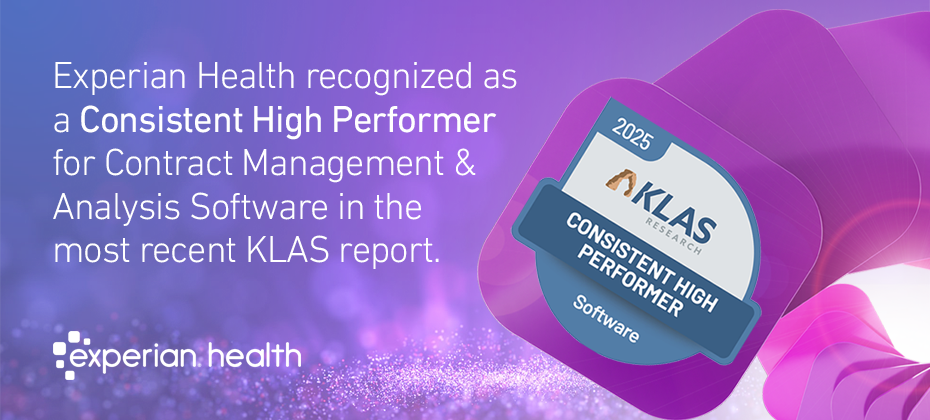
Key takeaways:
- Survey data shows that healthcare providers find it harder to secure reimbursement for their services.
- Automation, staff training and analytics are the keys to preventing denials, improving accuracy and streamlining every step of the claims process.
- Experian Health’s integrated claims management solutions are designed to close the claims gap and accelerate reimbursement.
Claims management has become one of the most pressing challenges in healthcare billing. In Experian Health’s 2024 State of Claims survey, 77% of providers said they were moderately to extremely concerned that payers won’t reimburse them, largely due to changing payer policies and prior authorization requirements. Billing teams are left to work through dense code lists and figure out each payer’s distinct playbook, often without the tools or time to catch mistakes. Managing claims efficiently is essential to ensure accurate and timely reimbursement.
What is claims management in healthcare?
Claims management is the process of preparing, submitting and following up on healthcare claims to ensure providers are paid for the care they deliver. It spans the entire revenue cycle, from verifying coverage during patient intake through final settlement.
For revenue cycle teams, good claims management is what keeps finances on track. But with the volume of patients, claims and complex payer rules continuing to increase, the pressure is on organizations to tighten up their processes. Three key findings from the State of Claims survey show what they are up against, when compared with metrics from 2022:
- 73% of providers say claim denials are increasing
- 67% report longer reimbursement timelines
- 55% have seen a rise in claim errors
Each denied or delayed claim adds to the administrative burden. However, when claims are submitted correctly the first time, staff can focus on patients instead of paperwork.
The claims management process step by step
Clean claims start with getting the basics right. “Once you let bad data in the door, it’s like a virus,” says Jordan Levitt, Senior Vice President at Experian Health. “Every action you take once bad data enters your system is wasting resources.” Each of the following steps is a chance to keep the claim moving:
Patient intake and verification
Staff collect and verify patient demographic information, insurance details and eligibility at patient intake. If any of the information is missing or incorrect, the risk of denial increases immediately. Experian Health’s flagship Patient Access Curator addresses this problem directly, using artificial intelligence (AI) and robotic process automation to automatically check and verify these details.
Medical coding
Coding is where clinical services become billable. Staff must select the correct codes from thousands of options covering diagnosis, procedure and supply. If the codes don’t match the care provided or a modifier is left out, the claim will come back, leaving money on the table.
Claim submission
At this stage, all the key data is packaged together and sent to the payer, often through a clearinghouse. Claims should be reviewed line by line for errors before filing, but relying on manual processes is slow and highly risky. Automation offers a better chance at catching issues before the claim reaches the payer.
Adjudication and payment posting
Once the payer reviews the claim, they’ll validate the services, apply negotiated rates and determine payment or denial. Payment posting closes the loop, allowing providers to reconcile accounts quickly and flag underpayments or errors needing further action.
Denial management and appeals
Not every claim gets paid the first time. When denials come in, teams need to know what went wrong to fix the issue and get the claim resubmitted quickly. Denial management software identifies the reasons for denials and organizes work queues for faster resolution.
Patient billing and collections
Anything insurance doesn’t cover is billed to the patient. If the bill is confusing or shows up late, it’s less likely to be paid. Upfront conversations, flexible payment options and convenient point-of-service collections can improve collection rates and patient satisfaction.
Best practices for effective claims management
Getting ahead of the claims challenge isn’t just about fixing denials after the fact, but about preventing them in the first place. Automation, staff training and visibility into what’s working (or not) all play a role.
Implementing automation and technology
Manual work and disconnected systems are a drag on reimbursement. Automation helps standardize routine tasks, reduce errors tied to human input and create consistent workflows that can handle sudden surges in patient volumes. AI takes this to the next level, by predicting denials, flagging coding errors or coverage issues before submission and prioritizing claims that need attention.
For example:
- ClaimSource® is an automated claims management system that organizes claims activity from a single hub. This system makes claims editing and submissions more efficient, by performing customizable edits and checking for errors before submission.
- On the back end, AI Advantage™ uses AI and machine learning to predict claim outcomes and push urgent tasks to the front of the queue, so staff can spend time on the claims that matter most financially.
Training and education for staff
Successful claims management depends on a confident team. Staff should undergo regular training to stay current on payer rules, policy changes, coding updates and get support to understand new technology.
To that end, Experian Health offers live training and on-demand webinars for teams to hear about the latest industry best practices and to see how others are using different tools. Hands-on consultancy support is also available to help teams get up and running with claims management products.
Monitoring and analyzing claims data
To improve claims performance, staff also need to be able to see where claims might be getting stuck. Tracking key performance indicators like clean claim rate, denial rate and days in accounts receivable helps staff spot issues. Integrated revenue cycle management tools bring everything together in one place so management can see the full picture and make sense of their data.
Common challenges in claims management and how to overcome them
Even with best practices in place, there will always be challenges and uncertainty. Claims pass through multiple departments, which means multiple opportunities for miscommunications or mistakes. Aligning workflows and claims management systems can reduce friction and help keep data secure.
Another hurdle is managing the growing number of tools in use. The 2024 State of Claims report shows that one in five providers uses at least three revenue cycle solutions to pull together each claim, creating more complexity than clarity. Again, choosing claims management software from a single supplier will ensure a neat and efficient process.
Finally, there’s the challenge of meeting changing patient expectations. For 65% of patients, managing healthcare is overwhelming, especially when it comes to understanding costs and coverage. Organizations must maintain fast, accurate and transparent claims processing for better patient experiences.
Next steps for strengthening your claims management approach
The impact of claims management goes beyond the balance sheet, directly affecting patient satisfaction and operational efficiency. To move forward, healthcare leaders should ask:
- Are denial trends being tracked and addressed?
- Do teams have the tools and training they need?
- Is automation being used where it can make the most significant difference?
Answering “yes” to these questions is the first step toward efficient claims management. With the right support, organizations can shift from daily firefighting to more predictable reimbursement strategies.
Find out more about how Experian Health’s award-winning claims management solutions help healthcare providers improve reimbursement rates and reduce denials.


